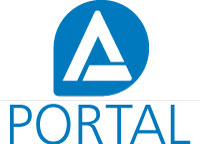Fire
If you discover a fire:
- Break glass alarm
- Shout "FIRE"
- Dial Emergency Services on 2222 or 01235 778888 from a mobile
- Give location of fire
When you hear the fire alarm:
- LEAVE the building by the NEAREST EXIT
- Go to FIRE ASSEMBLY AREA and
- CHECK on the presence of colleagues known to be at work
Medical Emergencies
Serious Injury
- Contact Security and request that an ambulance is called. If you dial 999 or 2222 from Zoom (PC or mobile) you will automatically be directed to Security. To contact Security from a mobile phone, dial 01235 778888. Try to phone from a mobile phone if possible so you can stay on the line as Security will be on the phone to the 999 Operator who will have a lot of questions. If a person at the scene dials 999, please ensure Security are informed.
- Ensure you are not endangering yourself as you try to help the casualty.
- Shout for assistance.
- Apply artificial respiration if needed (and if you are competent in the technique).
- Ask someone to retrieve the nearest defibrillator if it is suspected that there is no heartbeat (defibrillator will not shock the person if a heartbeat is detected; they are designed to be used by people with no training).
- If someone is available to help, ask them to stand outside the building and guide paramedics to the correct location.
Should an ambulance be required on the RAL site, please contact Security. However, if you find yourself in a situation where an ambulance has been called by a person attending to the casualty, please ensure Security are aware of this and can direct the ambulance to the correct location.
Minor Injury
Call the RAL Site Security team on 01235 778888 (extension 2222) to summon a first aider. Security will contact the nearest first aider and then send them to your location.
First Aid at RAL is provided in Zones (see table below to determine your location)
Mental Health
If you are experiencing any type of mental health crisis and/or worsening of an existing mental health issue, follow the table below to contact a Mental Health First Aider at Rutherford Appleton Laboratory.
First Aid Zones
First Aid at RAL is provided in Zones (see table below to determine your location)
| Zone 1 | R97, 100, 103, and 114(NSTF)
|
| Zone 2 | R26, 27, 31, 56, 75 & Ridgeway House
|
Zone 3
| Research Complex at Harwell (RCaH)
|
Zone 4
| R12, 29, 34, 49, 79, 89, 116 & 121(NQCC)
|
Zone 5
| R63, 65, 66 & 76
|
Zone 6
| R24, 40, 64, 78, 82, 81a, 105 & 106
|
Zone 7
| R6, 5.1, 5.2, 5.3, 5.4, 5.5, 52, 53, 55, 69, 77, 80, 81 & 108
|
Zone 8
| R2, 3, 4, & 7
|
Zone 9
| R25, 46, 72, 104, 123 and 109 (EPAC)
|
Zone 10
| R58, 68, 85, Sports Field & R112
|
Zone 11
| R1 & 61
|
Zone 12
| R8 ,9, 10, 11 & 115
|
Zone 13
| R22, 70 & 71
|
Reporting a Near Miss / Incident
All Safety, Health and Environmental incidents, including fires and near misses - incidents that have not resulted in injury - must be reported to both Line Management and the Safety Officer, or in the case of those involving radiation, to the Radiation Protection Advisers. All incidents should be reported using the
'Report Incident' portal link below, recording the date/time and location of the incident, those involved, and a brief description of the incident. In order to facilitate subsequent investigation it is important that following an incident or accident, equipment, machinery etc., should be left untouched unless by so doing a further hazard would be created.

Staff Working Alone
Lone working is inherently more hazardous than normal procedures and should only be undertaken when there is no alternative and only then if it is safe to do so. Staff wishing to work alone should discuss the risks with their Line Manager/Supervisor and agree a safe system of work. If there are any foreseeable hazards, they should be noted down along with the control measures needed to combat the risk. Line Managers/Supervisors should be aware of the requirement to provide adequate supervision under these circumstances and all staff should note that performing certain procedures alone is forbidden. These include:
- Entry into confined spaces
- Working with ladders which cannot be secured and require footing
- Work with certain substances which are hazardous to health
Apparatus left working unattended
If it is necessary for specialist electrical apparatus to be left working unattended, a label indicating the shutdown procedure and who to contact in an emergency should be displayed. Suitable labels can be obtained from the Safety Advisor.
Prior to departing the designated area, it is essential to ensure the proper isolation of any hazardous equipment or materials for safety measures.
